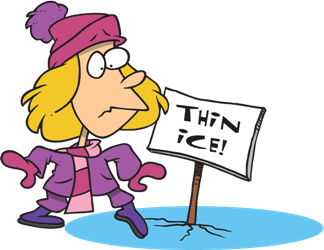Exclamation Mark
(also called Exclamation Point)
Rules and Examples
Review – What is Punctuation?
 Punctuation consists of symbols used in most languages, but only in written language.
Punctuation consists of symbols used in most languages, but only in written language. Click Here for Step-by-Step Rules, Stories and Exercises to Practice All English Tenses
For example, these symbols are used to help the reader understand:
- When a sentence, or thought, ends.
- Dialogue: in other words, when people are speaking punctuation lets us know who is speaking and when they stop.
- When a question is being asked.
- A strong statement: a warning, a direct order, or strong feelings.
What is the exclamation mark?
The exclamation mark is a simple vertical line above a period.In English it is only used at the end of a sentence.
It looks like this: !
When is the exclamation mark used?
An exclamation mark is used to give emphasis to a statement. This means
the writer wants the reader to understand there is strong feeling or
urgency to the statement. For example:
1. A warning
In a story, the main character tells his daughter: "Watch out!"The exclamation mark tells us that the man is scared and is calling out to his daughter.
Without the exclamation mark, the statement is not as urgent: "Watch out."

2. A direct order
If you read a sign on a door that says "Do Not Enter!" the exclamation mark helps catch your attention.You are more likely to notice "Do Not Enter!" than if it says "Do Not Enter."
The exclamation mark tells you that it might be dangerous to go through that door.
3. Expressing strong feelings
When we speak, we often use our voices and body movements (also known as "body language") to show feelings.In writing, other ways must be used. One way is to use an exclamation mark.
The exclamation mark can be used to show surprise, fear, happiness, etc.
For example:
- Fear: "That dog is going to bite me!"
- Anger: "Shut up!"
- Surprise: "The bus is early today!"
- Happiness: "It is good to see you again!"
How often should an exclamation mark be used?
Exclamation marks should not be "overused." That means, don’t use them too much.Use exclamation marks when you really want the reader to know you are making a strong statement.
Here is an example of a sentence where too many exclamation marks were used:
"It was raining! I took my umbrella to school! The wind blew it away! I arrived at school all wet!"
A better way to write this would be: "It was raining. I took my umbrella to school. The wind blew it away. I arrived at school all wet!"
The writer is expressing a strong feeling in the last sentence, so it is perfectly okay to use an exclamation mark there.
Final words of advice
Try not to use exclamation marks in "formal" writing – for example, in a job application letter or an essay.Feel free to use them in "informal" writing - for example when e-mailing or texting friends. They are very helpful in expressing emotions.
These were the uses of the question mark. Now that you know them, it is time to practice! Read and do exercises.
Get Updates, Special Offers, and English Resources
Download your FREE GIFT (the first two chapters of
English Short Stories Book and Workbook)
as soon as you join!

By submitting your email, you consent to receiving updates and newsletters from us and to the sharing of your personal data with third parties for the purposes of sending you communications. We will not spam you. You can unsubscribe at any time. For more information, please see our privacy policy.





